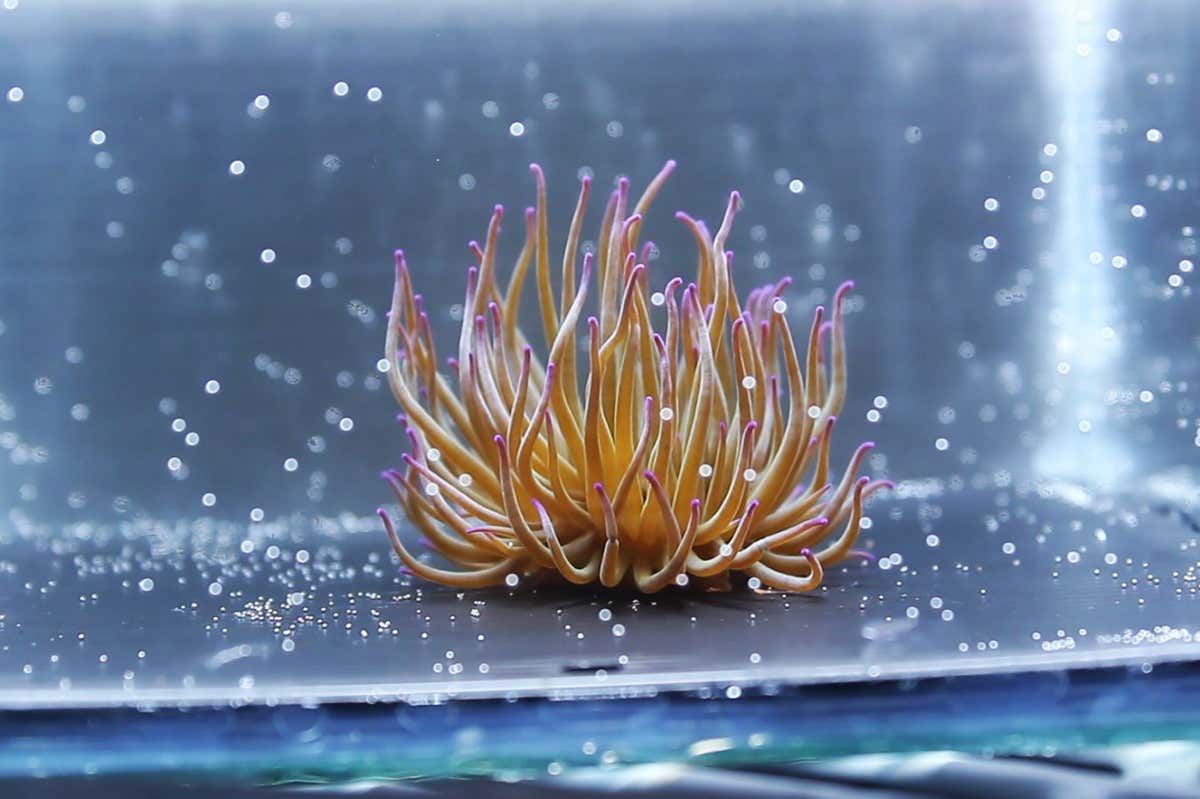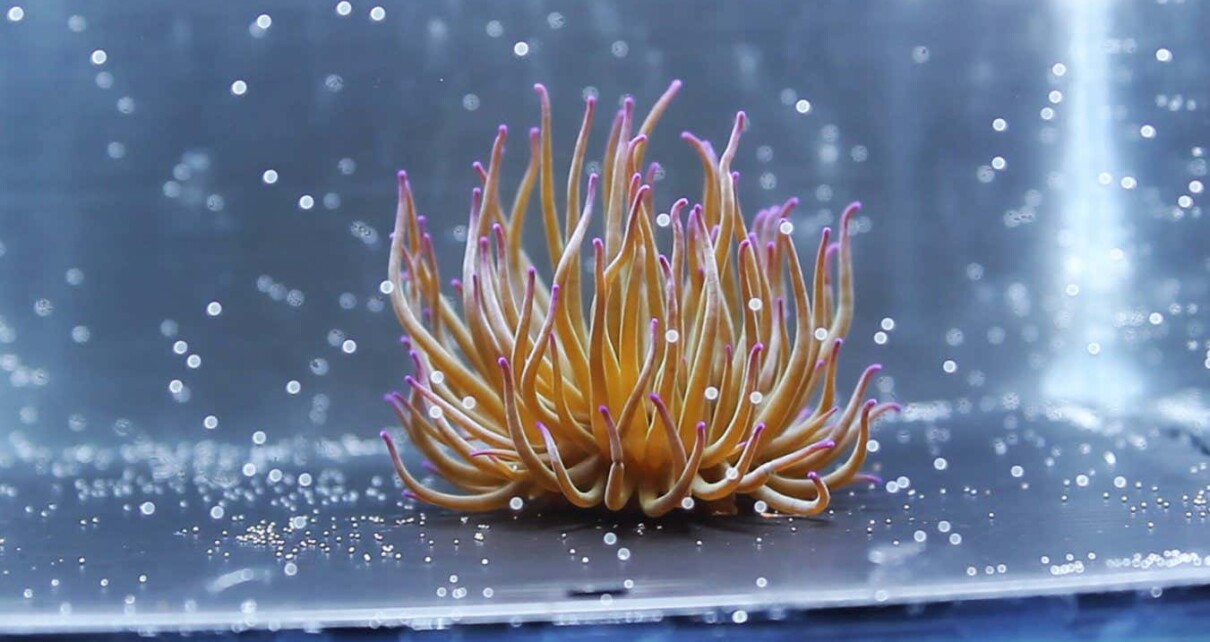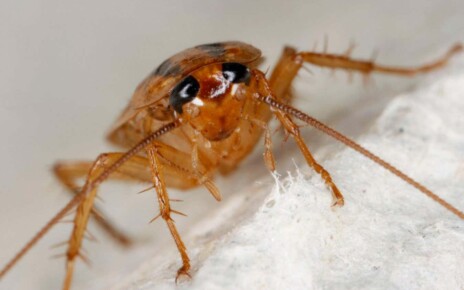[ad_1]

A snakelocks anemone in a laboratory tank
Vengamanaidu Modepalli
Photosynthetic anemones do something that was thought to be limited to plants until now: they orient themselves towards the sun, following its daily movement across the sky. These are the first known “heliotropic” animals.
Vengamanaidu Modepalli at the Marine Biological Association in Plymouth, UK, noticed that the snakelocks anemones (Anemonia viridis) in an aquarium at his institute were all pointing their tentacles towards the sun streaming in through a nearby window. When Modepalli closed the shutter, the anemones’ tentacles promptly fell into a disordered tangle. They perked up again within minutes once the shutter was reopened.
Snakelocks anemones host symbiotic algae (Symbiodinium) in their tissues, much like coral do. These algae use photosynthesis to supply food to their animal partner.
To see if these anemones responded to the sun similarly in their natural habitat, Modepalli and his colleagues filmed them in intertidal rock pools over the course of a day and found that the anemones tracked the sun’s position with their tentacles. The animals also did the same thing with a slowly moving light source in a laboratory tank.
Further experiments subjecting the anemones to different colours of light revealed that, just like sun-tracking plants, the anemones’ movements are primarily influenced by blue light wavelengths, which are highly absorbed in photosynthesis. When the team bleached the anemones, removing their algal partners, the number of tentacles pointing towards blue light fell from about 61 per cent to nearly none at all.
“[The bleached anemone] didn’t show any behaviour, it was completely lost,” says Modepalli.
The algae produce highly reactive oxygen-based chemicals during photosynthesis, and Modepalli thinks the build-up of these compounds in the anemones’ tissues could be one way sunlight is triggering the animals’ tentacles to move. But this idea needs to be tested.
Some other anemones, jellies and other animals were known to exhibit phototaxis, where they move their bodies closer to a source of light. But the snakelocks anemones are the first to show stationary sun-tracking behaviour. Modepalli thinks it may be a useful adaptation in the cramped rock pool habitat, where it is difficult to move to get more or less sun exposure for optimising photosynthesis. Lacking the ability to move, plants also evolved to do this.
“Both are doing photosynthesis and showing the same kind of behaviour,” says Modepalli. “It looks like if you expose these organisms to a similar environmental pressure, they [evolve] similar behaviours.”
Snakelocks anemones probably aren’t alone in this ability, says Claudia Pogoreutz at the University of Perpignan Via Domitia in France, who wasn’t involved in the research.
“I would expect that heliotropism is likely universal to the photosymbiotic lifestyle rather than the species of sea anemone targeted,” she says. Conducting similar experiments in other anemone species could potentially reveal more sun-tracking behaviour.
Topics:
[ad_2]
Source link




